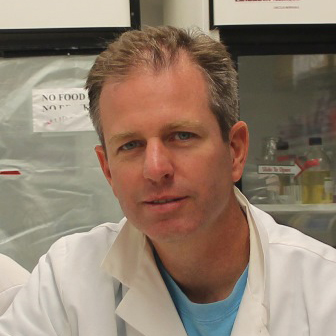
Department of Biochemistry
University of Nebraska-Lincoln
N133 Beadle Center
Lincoln, NE 68588-0664
402-472-7468
eharris5@unl.edu
Education
Postdoctoral, Biochemistry and Molecular Biology - University of Oklahoma HSC
Ph.D, Cell Biology - Louisiana State University HSC
B.S., Microbiology - Brigham Young University
Research Overview
The Harris lab is focused on receptor-mediated endocytosis in liver sinusoidal endothelial cells (SECs). SECs form the semi-permeable barrier between the blood and hepatocytes using fenestrated cytoplasm to allow molecules and not blood cells to perfuse through to the hepatocytes. SECs express several types of scavenger receptors, most notably the HARE or Stabilin-2 receptor which binds 14 known ligands. Several on-going projects in the lab address how the SECs respond to the accumulation of lipid droplets in the hepatocytes by way of non-alcoholic fatty liver disease (NAFLD) and the clearance rates of customized heparins by both Stabilin-1 and Stabilin-2.
As part of the CIBC, the laboratory is utilizing activities from both projects by assessing 1) how SEC endocytosis activity responds to shear stress, 2) the signaling activity via Stabilin-2 under shear stress, and 3) how fatty liver (NAFLD) impacts endocytosis and receptor expression in SECs.
The Harris group seeks to gain more insight in the fundamental biological chemistry of receptor-ligand interactions and how this impacts liver function in the organism. To do this, the group routinely harvests primary SECs from rat livers for biological-based experimentation. In addition, the lab has a library of recombinant cell lines expressing the scavenger receptors for biochemical assays. Data from our laboratory as well as others working in this area have shown that the SECs are among the most endocytically active cells of the body and are crucial for maintaining the cleanliness of the blood. This includes necrotic cells and dying red blood cells which may be immobilized by the SECs but then are engulfed by Kupffer cells. We hypothesize that cancer cells expressing the ECM product, hyaluronan, through higher hyaluronan synthase activity may also be immobilized by SECs via the Stabilin-2 receptor. The immobilized cancer may escape Kupffer cell surveillance and proliferate in the sinusoids to form a cancerous nodule.
The information from these projects will give us further insight in the importance of how the liver catabolizes specific molecules and extracellular components, how SECs cope in NAFLD which affects nearly a third of the US population, and why specific hyaluronan-rich cancers commonly metastasize to liver.
Selected Publications
- Xu Y., Cai C., Chandarajoti K., Hsieh P., Li L., Pham TQ., Sparkenbaugh EM., Sheng J., Key NS., Pawlinski R., Harris EN., Linhardt RJ., Liu J. (2014) Homogenous and Reversible Low-Molecular Weight Heparins. Nat. Chem Biol. 10(4):248-50 [PMID:24561662].
- Pandey, M.S., Baggenstoss, B.A., Washburn, J., Harris, E.N., Weigel, P.H. (2013) The Hyaluronan Receptor for Endocytosis (HARE) Activates NF-kB- mediated Gene Expression in Response to 40-400 kDa, but Not Smaller or Larger, Hyaluronans. J. of Biol. Chem. 288(20):14068-79 [PMID: 23530033]
- Harris, EN (2012) Heparin Clearance by Liver Scavenger Receptors. Biochem Anal Biochem, http://dx.doi.org/10.4172/2161-1009.1000e114.
- Pempe, EH, Yongmei, X., Gopalakrishnan, S., Liu, J., Harris, EN (2012) Probing the Structural Selectivity of Synthetic Heparin Binding to the Stabilin Receptors. J. of Biol. Chem 287(25):20774-83. [PMID: 22547069]
- Gopalakrishnan, S. and Harris, E.N. (2011) In vivo liver endocytosis followed by purification of liver cells by liver perfusion. J. of Vis. Exp. (JOVE) Nov 10;(57). pii: 3138. doi: 10.3791/3138. (10,739 views as of 1/15/2013). [PMID:22105014]